TAILORx: the largest randomized adjuvant breast cancer trial
The Trial Assigning IndividuaLized Options for Treatment (Rx) (TAILORx) reports 9-year outcomes for 10,273 patients with early breast cancer. Over 1,000 trial sites in 6 countries participated.
The trial objective was to determine if the Oncotype DX® test predicts recurrence and guides treatment decisions.
“Adjuvant chemotherapy may now be guided with an unprecedented level of evidence and precision,” said lead author Joseph A Sparano, MD. “The 21-gene assay … [can] identify the 70% of women with no chemotherapy benefit, and the others where chemotherapy may be life-saving.” Know with confidence who will benefit from chemotherapy and who will not.1-5
Key findings from the study, independently led by ECOG-ACRIN Cancer Research Group with sponsorship from the National Cancer Institute, indicate that patients with a low Recurrence Score® (RS) can safely forgo chemotherapy without compromising survival rates.
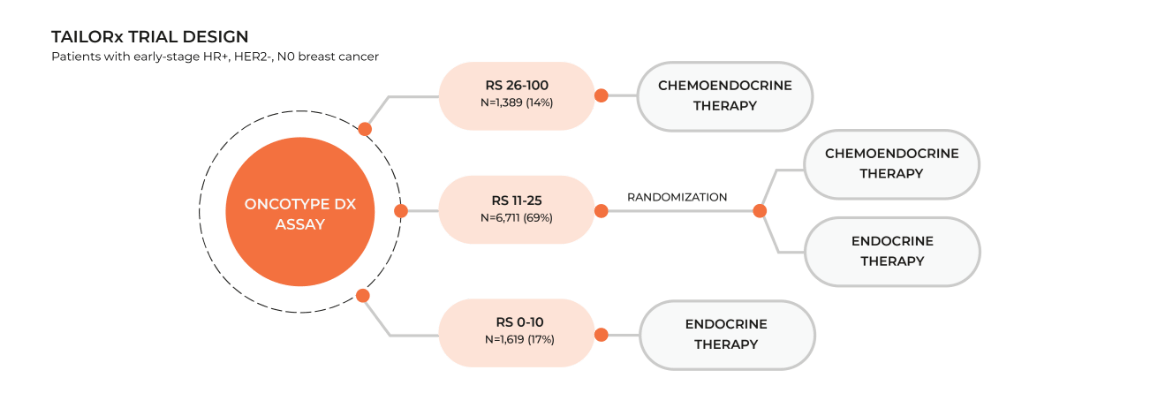
Who benefits from chemotherapy in early-stage ER+, HER2-, N0 breast cancer?
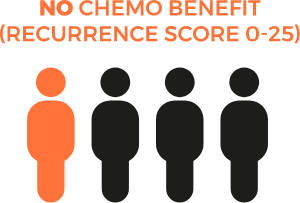
*High clinical risk: Grade 1, >3cm; Grade 2, >2cm; Grade 3, >1cm.
†Assuming that adjuvant chemotherapy would have been recommended because of the high clinical risk
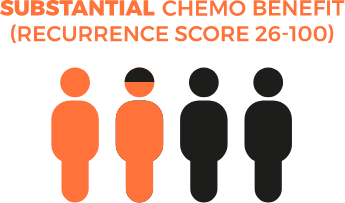
‡Low clinical risk: Grade 1, ≤3cm; Grade 2, ≤2cm; Grade 3, ≤1cm.
§Assuming that adjuvant chemotherapy would not have been recommended because of the low clinical risk
TAILORx eliminates “intermediate” Recurrence Score results (11-25) previously defined by the National Surgical Adjuvant Breast and Bowel Project (NSABP) B-20 study
Invasive disease-free survival
- No statistically significant difference in invasive disease-free survival was found among patients with Recurrence Score results 11–25, proving that they do not benefit from chemotherapy5
- TAILORx expanded on previous data, confirming excellent outcomes at 9 years for patients with Recurrence Score results 0–25 treated with endocrine therapy alone4,5
- For Recurrence Score results 26–100, there was a significantly higher event rate despite treatment with adjuvant chemotherapy5
Freedom from distant recurrence
- No statistically significant difference between treatment groups for freedom from distant recurrence at 9 years5
- TAILORx showed that patients with Recurrence Score results 11–25 can be spared chemotherapy5
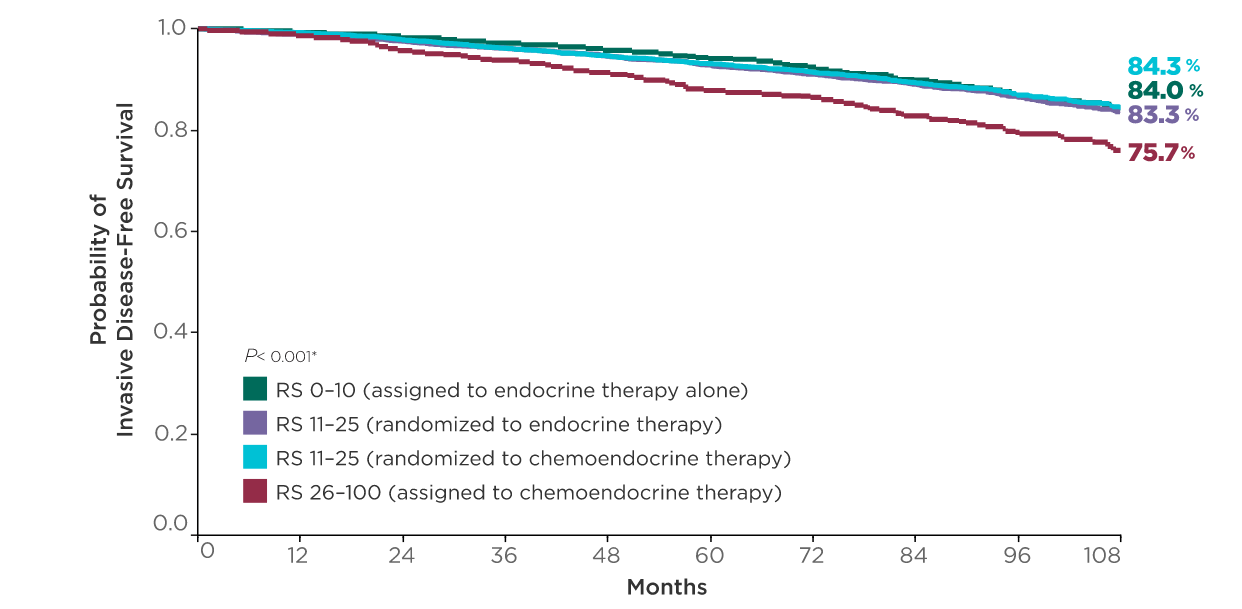
*Driven largely by the higher likelihood of having an event in the cohort with a Recurrence Score result 26–100.
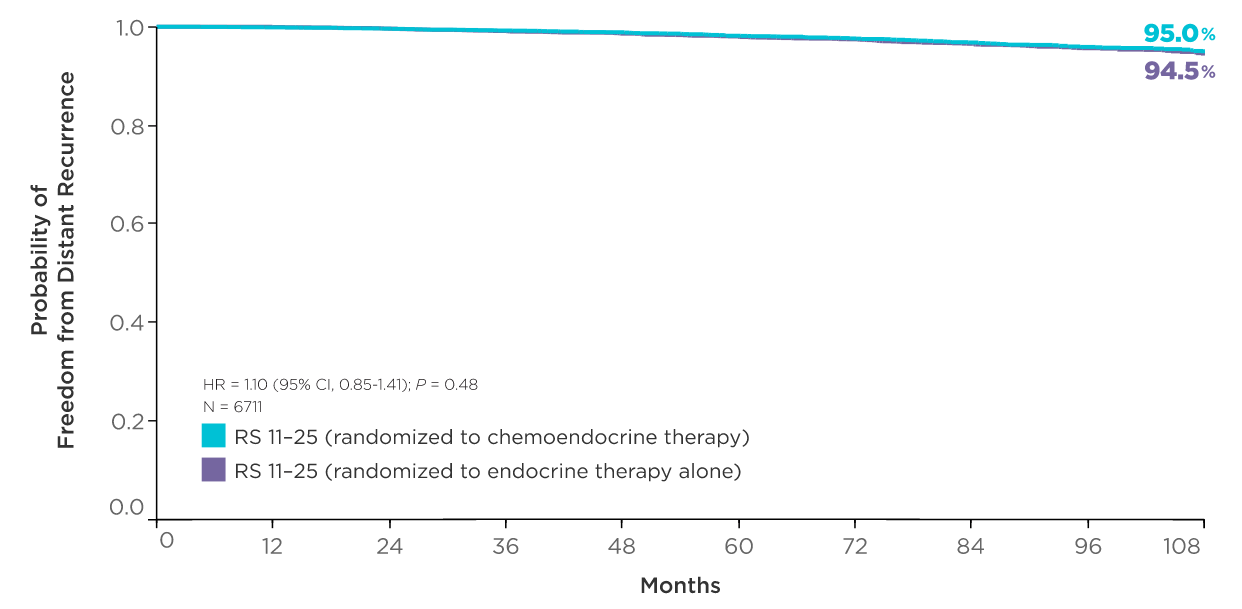
RS=Recurrence Score
TAILORx: Transforming the treatment of breast cancer
This 21-gene test is categorized by the NCCN Clinical Practice Guidelines In Oncology (NCCN Guidelines®) as “preferred” among gene expression assays for prognosis and prediction of chemotherapy benefits7,8
- Recommend to “strongly consider” for N0 patients with tumors >0.5 cm who are candidates for chemotherapy
The only test recognized by major guidelines for its high quality of evidence and robust strength of recommendation8-13
- Strongly recommended for most N0 women with ER+, HER2- early-stage breast cancer who are candidates for chemotherapy
- The only recommended assay that provides prognostic and therapy-predictive information
NSABP B-20 study
The NSABP B-20 study was performed on a cohort of 651 patients with ER+, node-negative breast cancer from the NSABP B-20 trial. The objective of this study was to determine whether the Recurrence Score result predicted the likelihood of chemotherapy benefit.1
Key findings from the study indicate:
- Low Recurrence Score result predicted little to no benefit from chemotherapy1
- High Recurrence Score result predicted large benefit from chemotherapy1
TAM=tamoxifen.
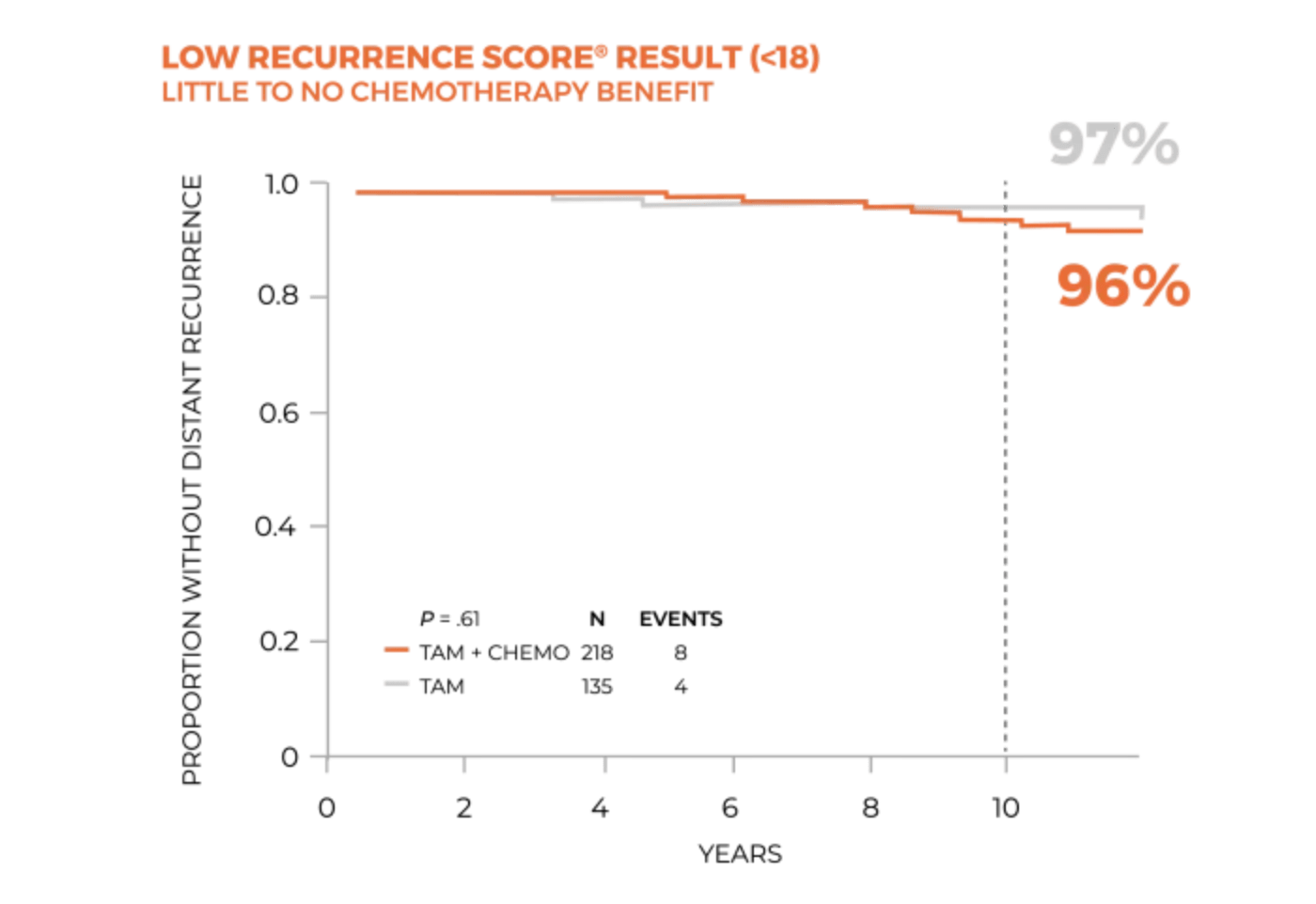
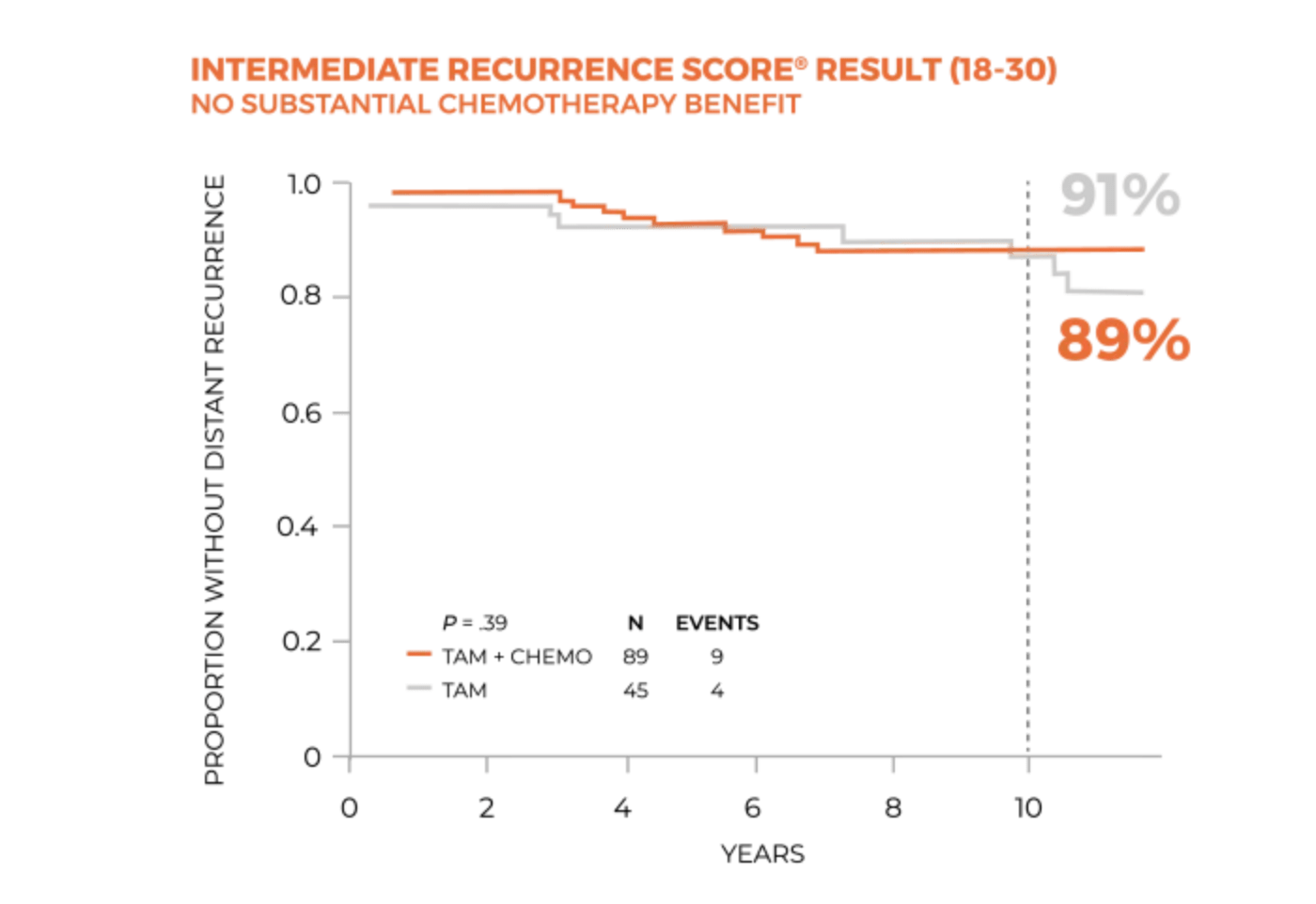
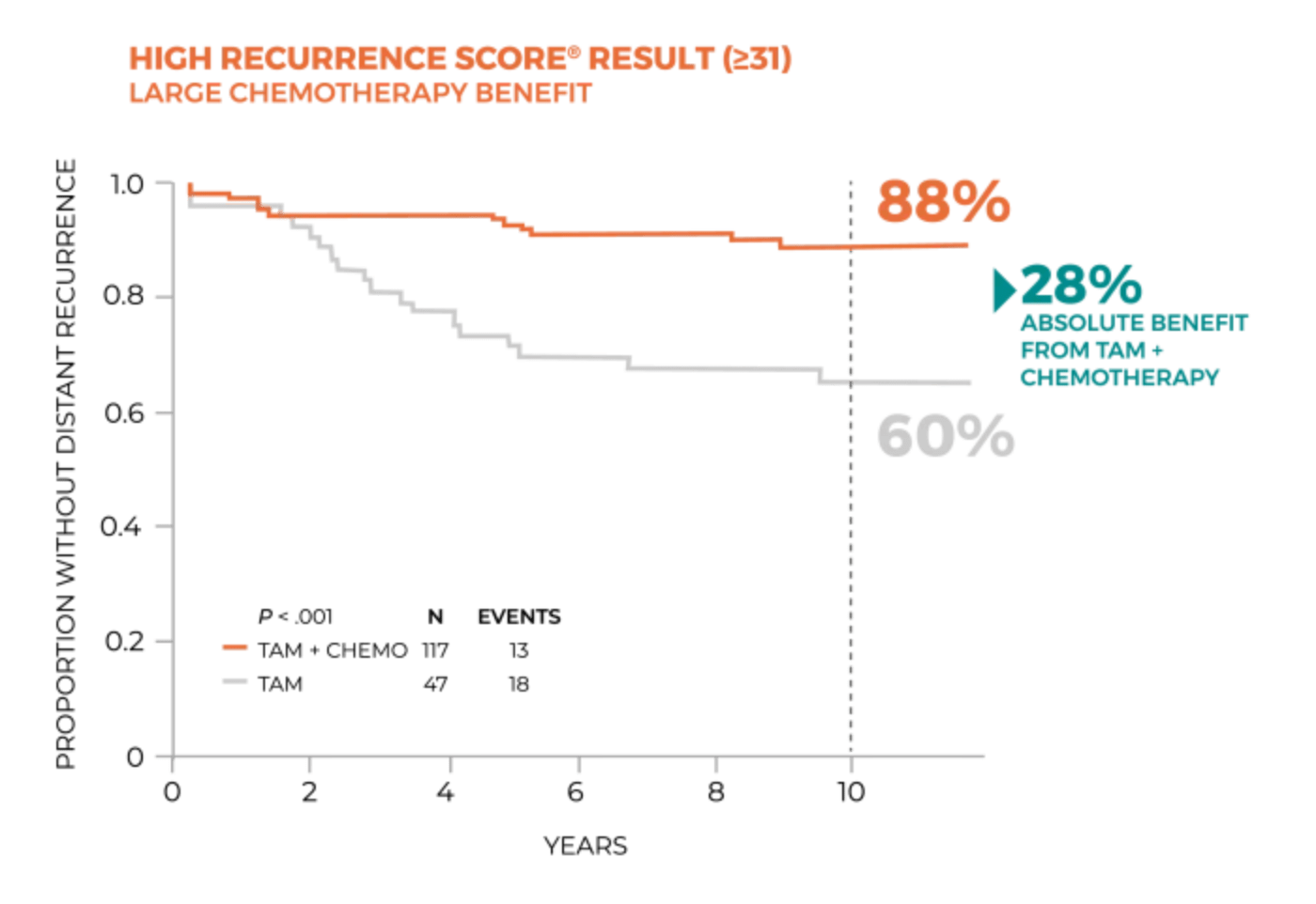
The TAILORx trial was conducted independently by the Eastern Cooperative Oncology Group - American College of Radiology and Imaging Network (ECOG-ACRIN) Cancer Research Group.
-
References
